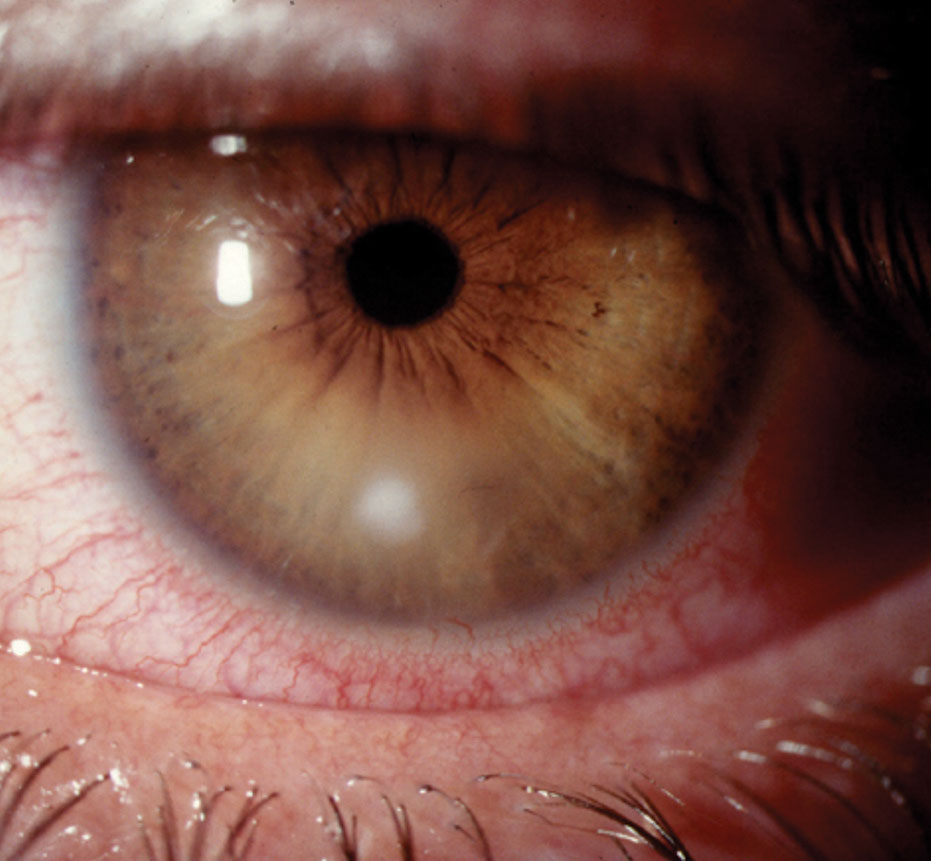 |
| Patients taking afatinib—a popular drug to treat lung cancer—are roughly 70% more likely to develop keratitis compared with those who don’t take the drug. Other EGFRis also significantly increase risk, though not quite as much. Photo: Joseph W. Sowka, OD. Click image to enlarge. |
Thanks to several FDA approvals in the last decade, epidermal growth factor receptor inhibitors (EGFRis) are now some of the most prescribed drugs to treat lung cancer. Ocular side effects have been documented for numerous cancer medications, and EGFRis are no exception; ocular toxicity can manifest as trichomegaly, dry eye or defects of the tear film or epithelium. Adding to this list, a recent study found that EGFRI therapy—especially second-generation afatinib—also increases the risk of new-onset keratitis.
The US population-based cohort study involved all patients treated for lung cancer over the last two decades from the TriNetX database. Of 1,388,108 total cases identified, 22,225 received EGFRi therapy. The researchers discovered that these patients were 50% more likely to develop keratitis than those who didn’t take this medication. Subtypes of EGFRi-associated keratitis included keratoconjunctivitis (hazard ratio, HR: 1.37), superficial keratitis (HR: 1.64) and corneal ulcer (HR: 2.13).
“Notably, keratoconjunctivitis, a common presentation in dry eye disease, was a frequent subtype observed in this study, suggesting that EGFRi-treated patients may have a higher risk of dry eye disease,” the researchers wrote in their paper, published in JAMA Ophthalmology.
Three generations of commonly prescribed EGFRis exist: first-generation gefitinib and erlotinib, second-generation afatinib and third-generation osimertinib. In this study, patients taking afatinib displayed the highest risk of keratitis (HR: 2.23). The authors pointed out that this finding is consistent with past studies that have reported greater adverse effects with afatinib than erlotinib.
There are several potential mechanisms that could contribute to the elevated risk of keratitis with EGFRi treatment. For one, EGFRi therapy has previously been linked to trichomegaly, “a recognized ocular adverse effect that elevates the risk of corneal cell damage due to abnormal overgrowth and misaligned eyelashes,” the researchers explained in their paper. “Additionally,” they continued, “EGFRis inhibit the proliferation, stratification, and migration of limbal and corneal stem cells, impeding the proper repair of damaged corneal epithelial cells.”
When seeing patients undergoing treatment for lung cancer, it’s important to clarify which medication (or medications) they are taking to assess the potential risk for keratitis. EGFRi-associated ocular effects require prompt diagnosis and management to prevent serious complications or treatment disruptions, the authors urge.
Huang P, Lin C, Dana R, Ma KS. Epidermal growth factor receptor inhibitors for lung cancer and the risk of keratitis. JAMA Ophthalmol. January 11, 2024. [Epub ahead of print]. |

